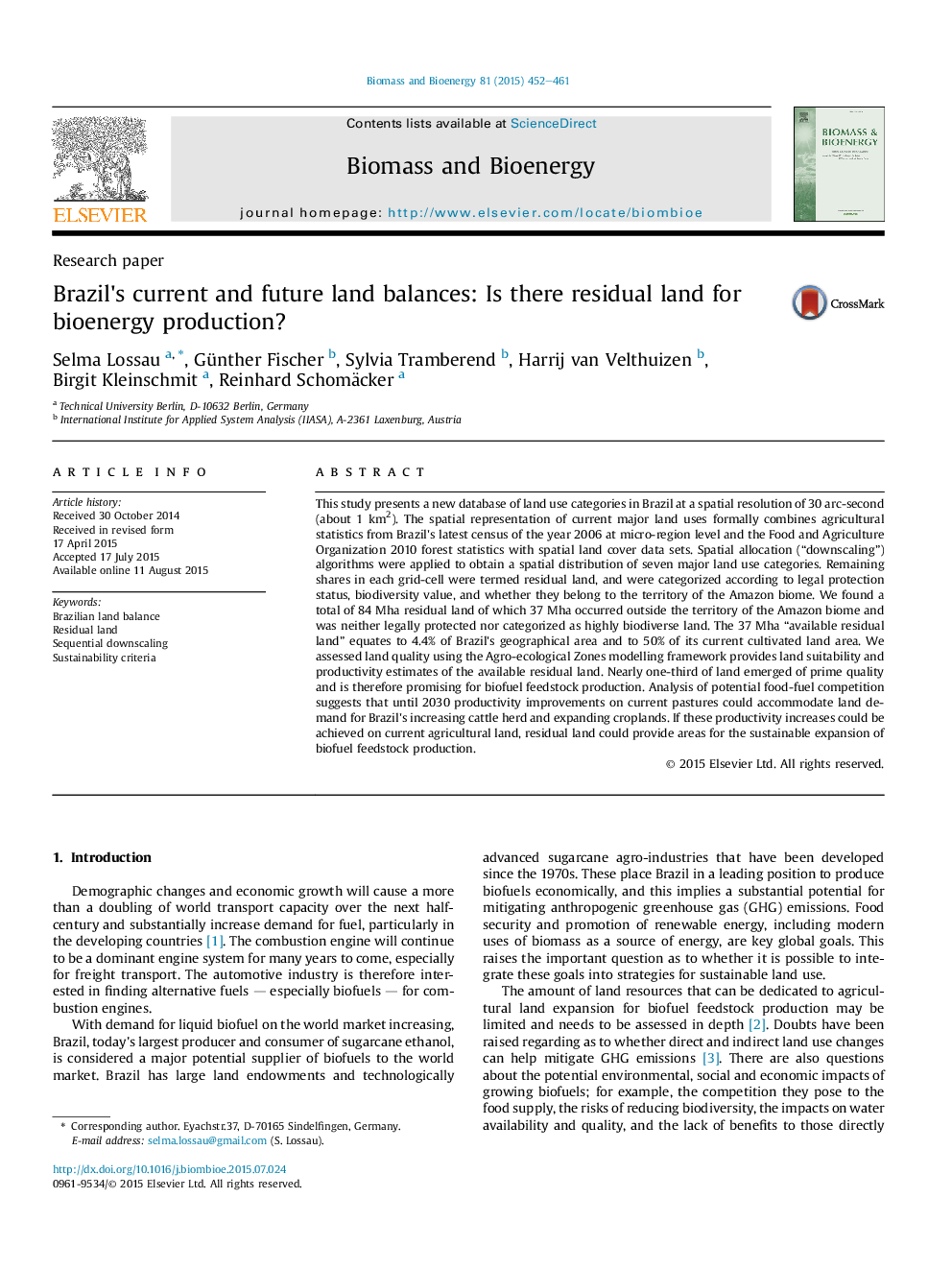| Article ID | Journal | Published Year | Pages | File Type |
|---|---|---|---|---|
| 7063855 | Biomass and Bioenergy | 2015 | 10 Pages |
Abstract
This study presents a new database of land use categories in Brazil at a spatial resolution of 30 arc-second (about 1Â km2). The spatial representation of current major land uses formally combines agricultural statistics from Brazil's latest census of the year 2006 at micro-region level and the Food and Agriculture Organization 2010 forest statistics with spatial land cover data sets. Spatial allocation (“downscaling”) algorithms were applied to obtain a spatial distribution of seven major land use categories. Remaining shares in each grid-cell were termed residual land, and were categorized according to legal protection status, biodiversity value, and whether they belong to the territory of the Amazon biome. We found a total of 84Â Mha residual land of which 37Â Mha occurred outside the territory of the Amazon biome and was neither legally protected nor categorized as highly biodiverse land. The 37Â Mha “available residual land” equates to 4.4% of Brazil's geographical area and to 50% of its current cultivated land area. We assessed land quality using the Agro-ecological Zones modelling framework provides land suitability and productivity estimates of the available residual land. Nearly one-third of land emerged of prime quality and is therefore promising for biofuel feedstock production. Analysis of potential food-fuel competition suggests that until 2030 productivity improvements on current pastures could accommodate land demand for Brazil's increasing cattle herd and expanding croplands. If these productivity increases could be achieved on current agricultural land, residual land could provide areas for the sustainable expansion of biofuel feedstock production.
Keywords
Related Topics
Physical Sciences and Engineering
Chemical Engineering
Process Chemistry and Technology
Authors
Selma Lossau, Günther Fischer, Sylvia Tramberend, Harrij van Velthuizen, Birgit Kleinschmit, Reinhard Schomäcker,
